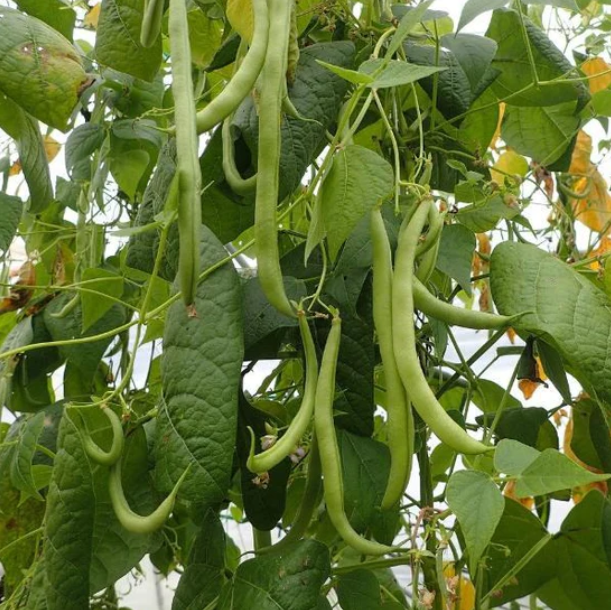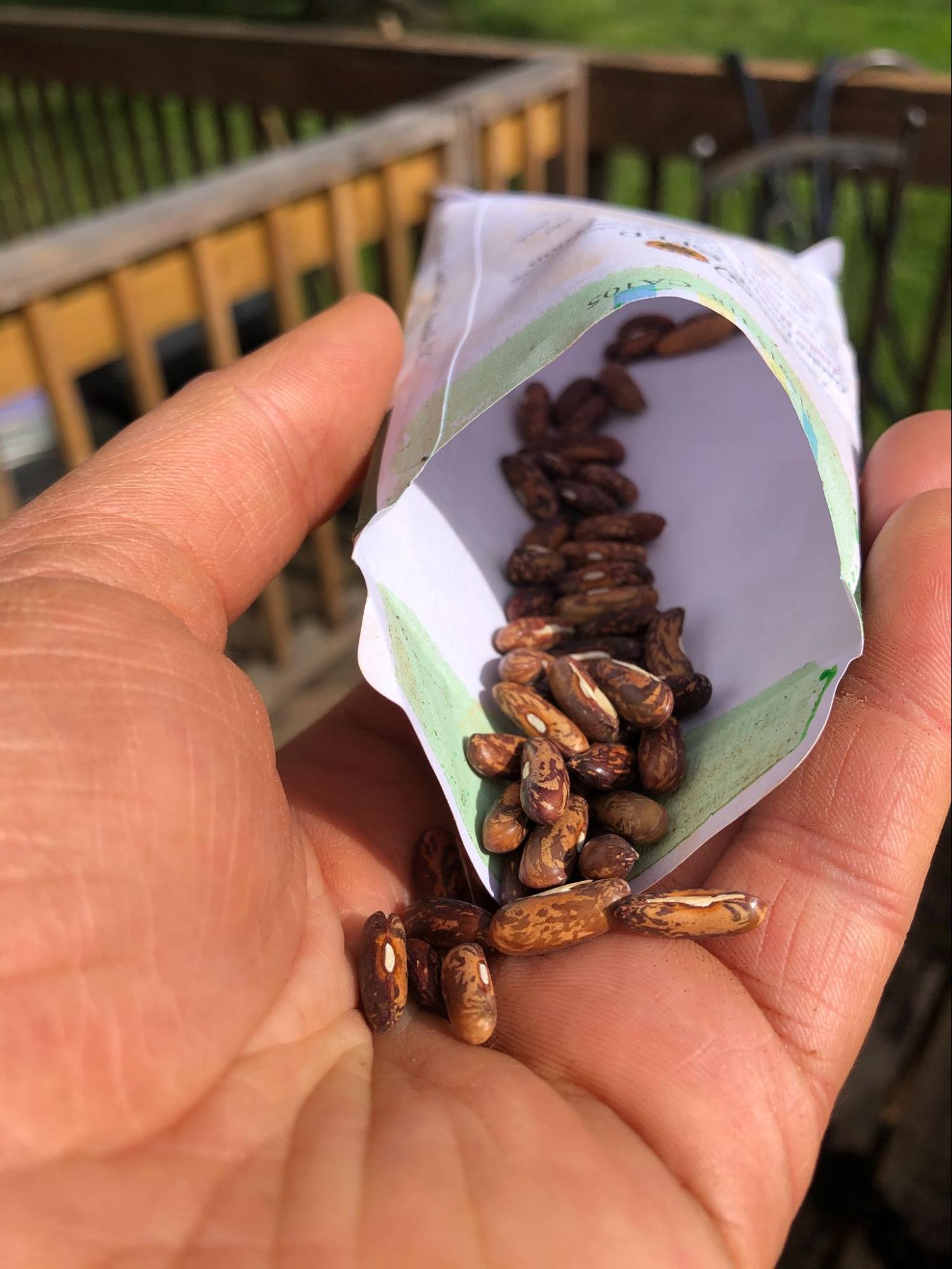What Are Beans?
Beans, beans, they're good for your heart! The more you eat, the more you… want to grow because there are just so many amazing varieties to try! These Fabaceae (legume family) crops are chock full of protein and nutrients and should be a staple part of your diet. Whether dried and shelled for soups or stews or fresh off the vine as snap beans - these legumes need a place in your garden.
All common beans (Phaseolus vulgaris) originated in the Americas and were probably first domesticated in what is now central Mexico, along with corn and squash. Beans have been a staple of indigenous diets throughout much of North and South America for millenia, before early European colonizers brought them back to their countries in the 16th century, and the common bean subsequently spread across the entire globe.
8 Types of Beans

Asparagus Beans
Vigna unguiculata
Asparagus beans, also known as yardlong beans, are technically not beans at all, but are actually the same species as Southern peas (cowpeas). Like Southern peas, they perform exceptionally well in hot, humid climates like the American Southeast and Midwest. The climbing vines produce flowers that are great for pollinators, and loads of long, slender pods that can be used much like any green bean. Though still a bit of a novelty here in the states, asparagus beans are a major vegetable in many Southeast Asian cuisines, where they are a prized ingredient in a number of different stir-fries, curries, and soups.
Yard Long Red Seeded - These slender, green pods grow up to two feet long (though harvest is recommended at about one foot).
Red Podded - With a bright, vibrant red color that stays when cooked, this bean is quicker to mature than the Yard Long variety.

Bush Beans
Phaseolus vulgaris
Bush beans are a great option for a quick, easy snap bean harvest in a limited space. Most varieties grow to about two feet tall and don’t require any trellising. The tradeoff is that usually bush beans produce just one or two flushes of beans, whereas pole beans will often keep producing over a longer season. Many gardeners grow both types of beans - bush varieties for early harvests and/or canning and pole types for heavier yields. Most bush bean varieties are grown for fresh eating but there are bush varieties for drying beans as well.
Blue Lake 274 - This well-loved heirloom bush bean produces a heavy yield all at once, making it perfect for canning. That being said, these tender beans are a favorite for fresh eating as well.
Royal Burgundy - Delicious and tender 5-inch long, deep purple pods grow on highly productive, sturdy plants. They don’t keep their color when cooked but they are absolutely stunning in the harvest basket!

Drying Beans
Phaseolus vulgaris
All beans can be dried for winter storage and soups, but some beans hold better flavor and mature to the drying stage quicker. These are what we refer to as drying beans! They can grow in pole and bush form, making for lots of options for the grower. The trick for snap beans is to continue harvesting so that the plant continues to produce pods. Drying beans are the opposite! They can be planted and just about left alone (besides what we all know and love as weeding and watering) for one major harvest at the end of the season once the pods are yellowed and dried out. You can check for this by listening for a rattle when you shake the pods. Then comes the shelling and storage of these wonderful beans for future use in soups, stews, chili and more all winter long.
Marrow Fat - The Marrowfat bean, also known as the White Egg bean, became popular in the mid 1800’s in part because of its creamy texture and bacon-like flavor.
Black Turtle - This classic black bean is used widely all over the Americas, most famously in black bean soup. This variety grows and dries easily, and while the plants do sprawl somewhat, they shouldn’t need trellising.
Pinto Beans - The name of these classic beans comes from the Spanish frijoles pintos, meaning “painted beans,” referring to their characteristic mottled coloring. Pintos are a favorite in soups and chili, or mashed and refried.
Six Nations Iroquois - Six Nations Iroquois is a variety of beautiful cranberry-type beans that are cream-colored and splattered with burgundy markings.
Tiger Eye - From Chile or Argentina, these beans have a rich and meaty flavor with skins so thin they seem to disappear! Dried beans are a lovely amber color with dark red striping.
Whipple - Although its exact history is lost to time, this old family heirloom is named after a pioneering family who settled in Oregon's Willamette Valley in the mid-19th century and raised this bean.

Fava Beans
Vicia faba
This pole type legume is actually a cool weather crop, unlike its more well-known bean cousins, and can be planted in early spring or again in fall in cooler climates. They produce large, waxy pods containing wide flat beans that you typically shell, discarding the pods. The beans can then be eaten fresh or dried and stored for later! Fava beans have a unique nutty and sweet flavor and are used in lots of Mediterranean and Middle Eastern dishes. Please note that a small percentage of people have a severe allergic reaction to fava beans, known as favism.
Aquadulce - This heirloom is high in protein with a rich flavor and a satisfying texture. They’ll benefit from some trellising but should only get about three feet tall.
Sweet Lorane - These favas are peel free! Which will save you a step in the kitchen. Bring on the delicious favas just a little bit faster and easier!

Lima Beans
Phaseolus lunatus
Also known as butter beans, lima beans have become infamous as an undesirable food (anxiety dreams about lima beans, anyone?), right there next to brussels sprouts. But as we’ve learned from brussels sprouts and other vegetables, any vegetable is delicious if prepared well. Lima beans can be found in both pole and bush types, giving growers options regardless of their garden size or capacity. They grow best in warm climates and should not be grown where temperatures may dip below sixty degrees fahrenheit.
Henderson Bush - This old heirloom has been around and beloved since the 1880s. The Henderson Bush type lima bean is a reliable producer under a variety of soil and weather conditions.
Shantyboat Butterbean - So beautiful! That is the calling card of this variety. The mottled pink, purple, and white beans are simply stunning and the plant can grow eight to ten feet high.

Pole Beans
Phaseolus vulgaris
Pole beans require some form of support whether it’s a trellis, a fence, or a corn stalk. They can vary in height from six to 20 feet depending on the variety. Pole beans will mature over time as they continue to grow and set flowers and pods. Pole beans are preferred for green beans to stagger the fresh harvest over time.
Fatman - Fatman is a very heavy producer of 5” pods on vines that get up to seven feet tall. There’s a lot of documentation of this bean being grown in both Virginia and West Virginia for over one hundred years.
Rattlesnake - Gorgeous pods with purple streaks encase striped beige and brown beans. Stringless pods will grow on vines reaching ten feet tall.

Soy Beans (Edamame)
Glycine max
Edamame (the delicious side we order at Japanese restaurants) is the young soybean, still green, and meant to be removed from the pod and popped into your mouth. The matured soybeans are what can be made into tofu, soybean paste, and much more!
Chiba Green - Early and heavy harvests are the hallmark of this soy bean. Enjoy your bumper crop of flavorful pods up to 10 days earlier than other varieties!
Midori Star - Midori’s long harvest window means a bowl of edamame to snack on every single night.

Runner Beans
Phaseolus coccineus
These vining plants produce gorgeous scarlet-colored flowers and large, fuzzy, 12” pods. When the pods are smaller they can be eaten whole as snap beans, but they can also be left to mature and dry producing a gorgeous dried bean for soups and stews. They grow similarly and can be cared for similarly to pole beans.
Scarlet Emperor - These vining plants with their gorgeous scarlet flowers produce tasty, meaty beans which dry to a beautiful lavender and black mottled seed. Give them a trellis in a part of your garden where you can enjoy this beautiful plant!
Which bean do you want to try? Whether for canning, fresh eating, or drying, there’s a bean out there for you. And more than likely, there’s more than one. Learn to grow beans this year and browse all of the bean seeds that Sow True Seed has to offer!

|
Article Written by: Hannah Gibbons |
|
About the Author: Hannah Gibbons, an employee at Sow True Seed since 2020, has nearly a decade of experience in the agricultural industry. Their passion for environmental education and regenerative agriculture has been the cornerstone of their work, aimed at making gardening accessible to all. |


